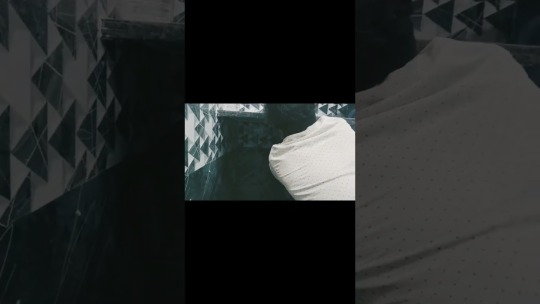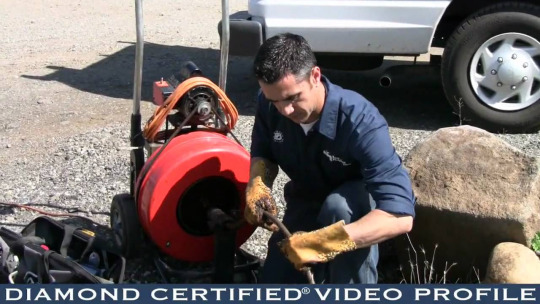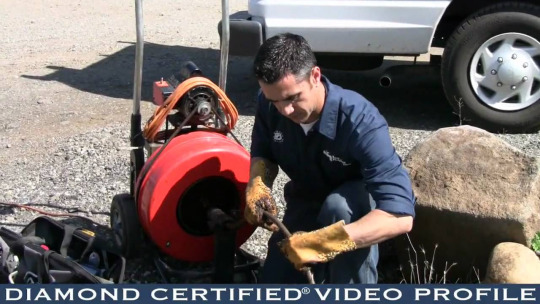Don't wanna be here? Send us removal request.
Text
Don’t Ignore These Hidden Signs of Water Damage in Your Basement
Introduction
When we think about home maintenance, many of us tend to focus on the more visible aspects—like landscaping, roof care, and appliance upkeep. However, one area that often gets overlooked is the basement. This subterranean part of our homes can be a breeding ground for hidden water damage. Don’t Ignore These Hidden Signs of Water Damage in Your Basement can save you from significant repair costs down the line.
Water damage isn't just an annoyance; it can lead to severe structural issues and create a cozy environment for mold and mildew. In this article, we will explore the subtle signs of water damage that homeowners often overlook, discuss why it's essential to address these signs early on, and provide actionable tips for effective water damage repair and prevention.
youtube
youtube
Understanding Water Damage What is Water Damage?
Water damage occurs when excess moisture penetrates your home’s structure. This can originate from various sources—leaky pipes, flooding, or condensation—and can lead to long-term issues if not addressed promptly.
Common Causes of Water Damage in Basements Pipe Leaks: Old or damaged pipes are a frequent culprit. Main Line Leak: A break in your home's main line can result in disastrous flooding. Slab Leak Detection: Undetected leaks beneath your foundation can cause significant damage over time. Heavy Rainfall: Intense storms can overwhelm drainage systems. Foundation Issues: Cracks in your foundation allow water to seep into your basement. Hidden Signs of Water Damage 1. Musty Odors
There's nothing quite like that unmistakable musty smell wafting up from the basement to indicate potential trouble below the surface. If you notice this odor, it could mean you're dealing with mold or mildew growth—a common consequence of persistent moisture.

Why Musty Odors Occur
Musty odors result from microbial growth due to excessive humidity levels in basements. These odors should never be ignored as they indicate ongoing moisture problems that need immediate attention.
2. Dampness on Walls or Floors
If you touch the walls or floors in your basement and find them damp or slick, it's a clear sign that water infiltration is occurring.

Detecting Dampness
To confirm dampness:

Conduct a visual inspection for stains or discoloration. Use a moisture meter for precise readings. 3. Peeling Paint and Wallpaper
Peeling paint or wallpaper may seem trivial at first glance but can indicate deeper problems related https://pandalicious88.gumroad.com/p/how-to-safeguard-your-foundation-from-hidden-water-damage-problems to moisture buildup behind these surfaces.
Why Does This Happen?
As moisture accumulates behind paint and wallpaper, it creates pressure that forces these materials away from the wall surface.
4. Mold Growth
Mold thrives in damp conditions and can appear as black spots on walls, ceilings, or floors.
Health Implications of Mold
Mold exposure poses health risks such as allergies and respiratory issues; thus, it’s crucial to take action if you see this unwelcome visitor.
5. Cracked Walls and Floors
Cracks in your basement walls or floors are significant indicators of settling foundations caused by water erosion.
0 notes
Text
The Silent Killer: Why Slab Leak Detection Is Crucial for Your Home
Introduction
In the realm of home maintenance, slab leaks often play a hidden role, quietly wreaking havoc beneath your feet. Homeowners might not realize that their cozy abode could be harboring a silent killer: undetected plumbing issues that could lead to catastrophic water damage, costly repairs, and a compromised foundation. This article dives deep into the importance of slab leak detection and why it should be on every homeowner's radar.
youtube
The Silent Killer: Why Slab Leak Detection Is Crucial for Your Home
Slab leaks are defined as leaks that occur in the pipes located beneath the concrete slabs of homes. These hidden leaks can manifest as a variety of problems—some subtle and some glaringly obvious—but all can lead to significant issues if left unchecked. Water accumulating under your foundation can erode soil, leading to structural instability, mold growth, and costly repairs.
What is a Slab Leak? A slab leak occurs when the water pipes under the concrete foundation of your home develop cracks or breaks. Causes include corrosion, shifting soil, or improper installation. Why Are Slab Leaks Dangerous? They can lead to significant water damage, mold growth, and even structural failure if not detected early. Signs You Have a Slab Leak Increased water bills Damp spots on floors Cracks in walls or flooring The sound of running water when all fixtures are off Understanding Slab Leak Detection What Does Slab Leak Detection Involve?
Slab leak detection involves various techniques used by plumbers to identify leaks without invasive methods like digging up concrete.

Why Use Professional Services?
While some homeowners may attempt DIY methods, hiring professional leak detection services ensures accurate results and proper repair methods.
Common Causes of Slab Leaks Corrosion of Pipes Older galvanized pipes are prone to rust and corrosion over time. Ground Movement Shifting soil due to natural disasters or poor drainage systems can cause stress on pipes. Poor Installation Practices Improperly installed plumbing systems can lead to vulnerabilities down the line. The Cost Implications of Ignoring Slab Leaks Foundation Repair Cost
Ignoring signs of slab leaks can lead to foundation damage requiring extensive repairs.
| Type of Repair | Average Cost | |-----------------|--------------| | Minor Repairs | $500 - $2,000 | | Major Foundation Work | $5,000 - $20,000 |
Detecting a Slab Leak: Techniques Used by Professionals Electronic Leak Detection
Using advanced technology like acoustic sensors allows plumbers to pinpoint http://messiaharao613.theburnward.com/don-t-ignore-these-hidden-signs-of-water-damage-in-your-basement leaks without invasive measures.
Thermal Imaging Cameras
These cameras help identify temperature differences in floors that indicate moisture levels beneath them.
youtube

The Role of Plumbers in Slab Leak Detection Finding a Qua
1 note
·
View note
Text
Water Damage Repair Essentials: Addressing Underlying Plumbing Problems
Introduction
Water damage is a homeowner's nightmare, and it can stem from various sources. One common cause is underlying plumbing problems that, when left unaddressed, can lead to significant structural issues and costly repairs. This article will delve into the essentials of water damage repair, focusing on how to effectively address these plumbing issues. We’ll cover everything from the initial signs of water damage to strategies for effective repair and prevention. With the right knowledge and approach, homeowners can tackle these challenges head-on.
Water Damage Repair Essentials: Addressing Underlying Plumbing Problems
Water damage repair isn't just about mopping up puddles or replacing drywall; it's about understanding the root causes of the problem. Often, hidden plumbing issues such as leaks in pipes, slab leaks, or main line leaks are at play. Ignoring these problems can lead to severe structural damage and increased foundation repair costs.
youtube
Understanding Water Damage What Causes Water Damage?
Water damage can result from various factors including:
Pipe Leaks: Small leaks can go unnoticed but cause extensive damage over time. Main Line Leaks: A break in the main line can lead to significant flooding. Slab Leaks: These occur beneath the foundation and are often challenging to detect. Weather-related Issues: Heavy rainfall or snowmelt can overwhelm drainage systems.
Identifying the source is crucial for effective water damage repair.
youtube
Common Signs of Water Damage
Homeowners should be vigilant for signs indicating potential water damage:

Stains on walls or ceilings Mold growth A musty smell Increased water bills
If you notice any of these signs, it may be time to call a plumber near you for an inspection.
The Role of Plumbing in Water Damage Why Plumbing Issues Matter
Plumbing systems are essential for a home's functionality but can also be its Achilles' heel if not properly maintained. Issues like pipe leaks not only contribute to water damage but may also affect a home’s structural integrity.
How Plumbing Failures Lead to Water Damage
Understanding the relationship between plumbing failures and water damage involves looking at how water moves through your home:
A small leak accumulates over time. Moisture seeps into walls and foundations. Mold begins to grow, leading to health risks. Structural components weaken due to prolonged exposure. https://writeablog.net/millinafzz/unseen-threats-how-a-hidden-pipe-leak-can-wreck-your-foundation-8sqf
Addressing these plumbing failures early on helps mitigate future risks.
Addressing Underlying Plumbing Problems Identifying Hidden Leaks
One of the first steps in addressing underlying plumbing issues is identifying hidden leaks:
Use moisture meters to detect damp areas. Regularly check your meters; an unexpected spike may indicate a leak.
If you suspect a slab leak, consider hiring professionals who specialize in slab leak detection.
youtube
Repair Techniques for Common Plumbing Issues
H
0 notes
Text
Water Damage Repair Essentials: Addressing Underlying Plumbing Problems
Introduction
youtube
Water damage is a homeowner's nightmare, and it can stem from various sources. One common cause is underlying plumbing problems that, when left unaddressed, can lead to significant structural issues and costly repairs. This article will delve into the essentials of water damage repair, focusing on how to effectively address these plumbing issues. We’ll cover everything from the initial signs of water damage to strategies for effective repair and prevention. With the right knowledge and approach, homeowners can tackle these challenges head-on.
youtube
Water Damage Repair Essentials: Addressing Underlying Plumbing Problems
Water damage repair isn't just about mopping up puddles or replacing drywall; it's about understanding the https://www.tumblr.com/differentgalaxything/771744118121594880/water-damage-repair-essentials-addressing root causes of the problem. Often, hidden plumbing issues such as leaks in pipes, slab leaks, or main line leaks are at play. Ignoring these problems can lead to severe structural damage and increased foundation repair costs.
Understanding Water Damage What Causes Water Damage?
Water damage can result from various factors including:
Pipe Leaks: Small leaks can go unnoticed but cause extensive damage over time. Main Line Leaks: A break in the main line can lead to significant flooding. Slab Leaks: These occur beneath the foundation and are often challenging to detect. Weather-related Issues: Heavy rainfall or snowmelt can overwhelm drainage systems.
Identifying the source is crucial for effective water damage repair.
Common Signs of Water Damage
Homeowners should be vigilant for signs indicating potential water damage:
Stains on walls or ceilings Mold growth A musty smell Increased water bills
If you notice any of these signs, it may be time to call a plumber near you for an inspection.
youtube
The Role of Plumbing in Water Damage Why Plumbing Issues Matter
Plumbing systems are essential for a home's functionality but can also be its Achilles' heel if not properly maintained. Issues like pipe leaks not only contribute to water damage but may also affect a home’s structural integrity.
How Plumbing Failures Lead to Water Damage
Understanding the relationship between plumbing failures and water damage involves looking at how water moves through your home:
A small leak accumulates over time. Moisture seeps into walls and foundations. Mold begins to grow, leading to health risks. Structural components weaken due to prolonged exposure.
Addressing these plumbing failures early on helps mitigate future risks.
Addressing Underlying Plumbing Problems Identifying Hidden Leaks
One of the first steps in addressing underlying plumbing issues is identifying hidden leaks:
Use moisture meters to detect damp areas. Regularly check your meters; an unexpected spike may indicate a leak.
If you suspect a slab leak, consider hiring professionals who specialize in slab leak detection.
Repair Techniques for Common Plumbing Issues
H
0 notes
Text
Essential Steps for Detecting a Main Line Leak Before It Ruins Your Foundation
Introduction
Water is essential for life, but too much of it can spell disaster, especially when it comes to our homes. A main line leak has the potential to cause significant damage to your foundation, leading not only to structural issues but also to costly repairs. In this comprehensive guide, we will explore the essential steps for detecting a main line leak before it ruins your foundation. We will delve into everything from early warning signs and detection methods to hiring a professional plumber and understanding the costs associated with repair.
If you're searching for ways to safeguard your home from water damage, you’re in the right place. Let’s dive into this critical topic and learn how to protect your foundation effectively.

Understanding Main Line Leaks What is a Main Line Leak?
A main line leak refers to any water leak that occurs in the primary plumbing line supplying water to your home. This could be due to corrosion, ground movement, or even tree roots invading the piping system.
Causes of Main Line Leaks Corrosion: Older pipes made of metal are susceptible to rust over time. Environmental Factors: Soil movement due to natural events can put pressure on pipes. Tree Roots: Roots can infiltrate pipes and cause cracks or breaks. Improper Installation: Poorly installed plumbing systems are prone to leaks. Why is it Critical to Detect a Leak Early?
Detecting a leak early can save you from extensive foundation repair costs and help maintain your home's value. Water damage often leads not only to structural issues but also mold growth, which poses health risks.
Essential Steps for Detecting a Main Line Leak Before It Ruins Your Foundation Step 1: Monitor Your Water Bill
One of the simplest ways https://elliotjhir068.weebly.com/blog/main-line-leak-myths-understanding-the-real-risks-to-your-foundation9662801 to spot a leak is by closely monitoring your monthly water bill. If you notice an unusual spike without an increase in usage, there may be a hidden leak somewhere in your plumbing system.

Step 2: Conduct Visual Inspections
Regularly inspect areas around your home where plumbing is visible, such as:
Basements Crawl spaces Under sinks
Look for moisture on walls or floors, which may indicate leaking pipes.
Step 3: Check for Unusual Water Pooling
After heavy rainfall or irrigation, check for pooling water near your foundation. This could signify that water is not draining properly due to underground leaks.
youtube
Step 4: Listen for Unusual Sounds
Sometimes leaks make distinct sounds that can alert you before they become major problems. Listen for:
Continuous running water sounds Dripping noises behind walls
These could indicate leaks in hidden areas of your plumbing system.
Step 5: Use Technology for Detection
Invest in technology designed for slab leak detection. There are various tools available that utilize sound waves or thermal imaging to identify leaks without invasive digging.
Step 6: Engage Professional Help
If you've done all you can but still suspect a leak, it might be time to call in professionals like plumbers who specialize in pipe leak repair. They have the expertise and equipment ne
1 note
·
View note